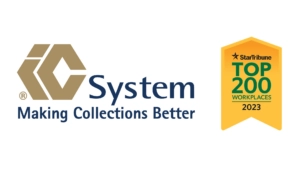Smart Controls and ERVs: Enhance IAQ Effortlessly in Resimmercial Spaces
After COVID-19, the criticality of high-level indoor air quality (IAQ) is clear. With invisible, odorless and potentially deadly indoor air contaminants swirling around, it’s evident that increased ventilation is essential for safeguarding occupant health. This is especially crucial in tight structures that trap contaminants indoors.
However, more ventilation requires more energy, which boosts costs and runs counter to decarbonization efforts. Plus, conventional ventilation systems can be tricky and time consuming to operate. Not anymore. That’s where the combination of smart controls and energy recovery ventilators (ERVs) comes in to provide an effortless, energy-efficient and cost-effective solution. This is particularly true for residential and smaller commercial—or “resimmercial”—applications.
This topic was covered during the latest episode of IAQ IQ: Indoor Air Quality & You.
Host Michelle Dawn Mooney spoke with Nick Agopian, VP, Sales & Marketing at RenewAire and Ross Trethewey, Founder and Lead Engineer at TE2 Engineering. Some of the main points addressed include:
- What are smart controls in resimmercial spaces?
- Smart controls allow for control of a home or building’s heating, ventilation, air conditioning, lighting, appliances or security through a single interface. In resimmercial applications, smart controls have traditionally been lacking. However, that’s changing as Trethewey explained, “Controls that are available now are at a better cost and can ventilate a space properly and autonomously – running behind the scenes to ventilate a house. Homeowners can set it and forget it.”
- How are smart controls and ventilation connected?
- Sensors for indoor air contaminants can be set up and connected to a smart controls system. When the sensors detect too much of a contaminant, ventilation will be activated. Agopian noted, “There’s a saying within our industry: ‘build it tight and ventilate it right,’ but it should be: ‘build it tight and ventilate and control it right.’”
- How can smart controls help to enhance IAQ?
- Smart controls manage a holistic HVAC system to enhance IAQ in three ways:
- Source capture: The focus here is removing contaminants from key indoor sources. Some examples include:
- Kitchen: The exhaust hood is activated to remove fumes.
- Bathroom: The bath fan or ventilation system is activated to remove moisture and odors.
- Radon: If radon is detected, the ventilation system is activated.
- Filtration: The focus here is filtering out contaminants from the airstream before entering a space.
- General ventilation: The focus here is replacing stale indoor air with fresh and filtered outdoor air. This lends itself to using an ERV.
- Source capture: The focus here is removing contaminants from key indoor sources. Some examples include:
- Why does using ERVs with smart controls make sense?
- Smart controls can run on any ventilation system. Further, replacing a conventional, non-ERV system with an HVAC system supplying outdoor air via an ERV improves IAQ and energy efficiency. This is because ERVs use balanced airflows and recover otherwise-expended total energy. In summer, warm and humid outside air is precooled and dehumidified via the total energy from the outgoing interior air. In winter, cold and dry outside air is preheated and humidified via the total energy from the outgoing interior air. Subsequently, less energy is needed for conditioning and ventilation.
- How much do smart controls cost?
- The cost depends on the size of the building and the complexity of the system. The range is from a couple hundred dollars to a couple thousand. Agopian said, “Yes, there’s a cost, but what’s important is what are the health benefits behind those incremental costs? And when you take these costs and amortize them over a mortgage of 20-25-years, you’re talking about pennies per day.”
- Smart controls manage a holistic HVAC system to enhance IAQ in three ways:
Agopian and Trethewey made it apparent that smart controls and ERVs are a smart choice for enhancing IAQ right now and in the future. Agopian stated, “Going forward, the market and updated codes will require an increase in ventilation rates to bring more outdoor air indoors. Smart-controlled sensors can monitor indoor air contaminants and activate boost-mode ventilation when levels get too high. Thus, smart controls will become a necessity to increase ventilation, lower the concentration of indoor air contaminants and enhance IAQ for yes safety, but also better health.”
Key points:
- Smart controls are designed to be part of a holistic system
- Smart controls enable activity-based control
- Smart controls paired with ERVs is an energy-efficient way to enhance IAQ







